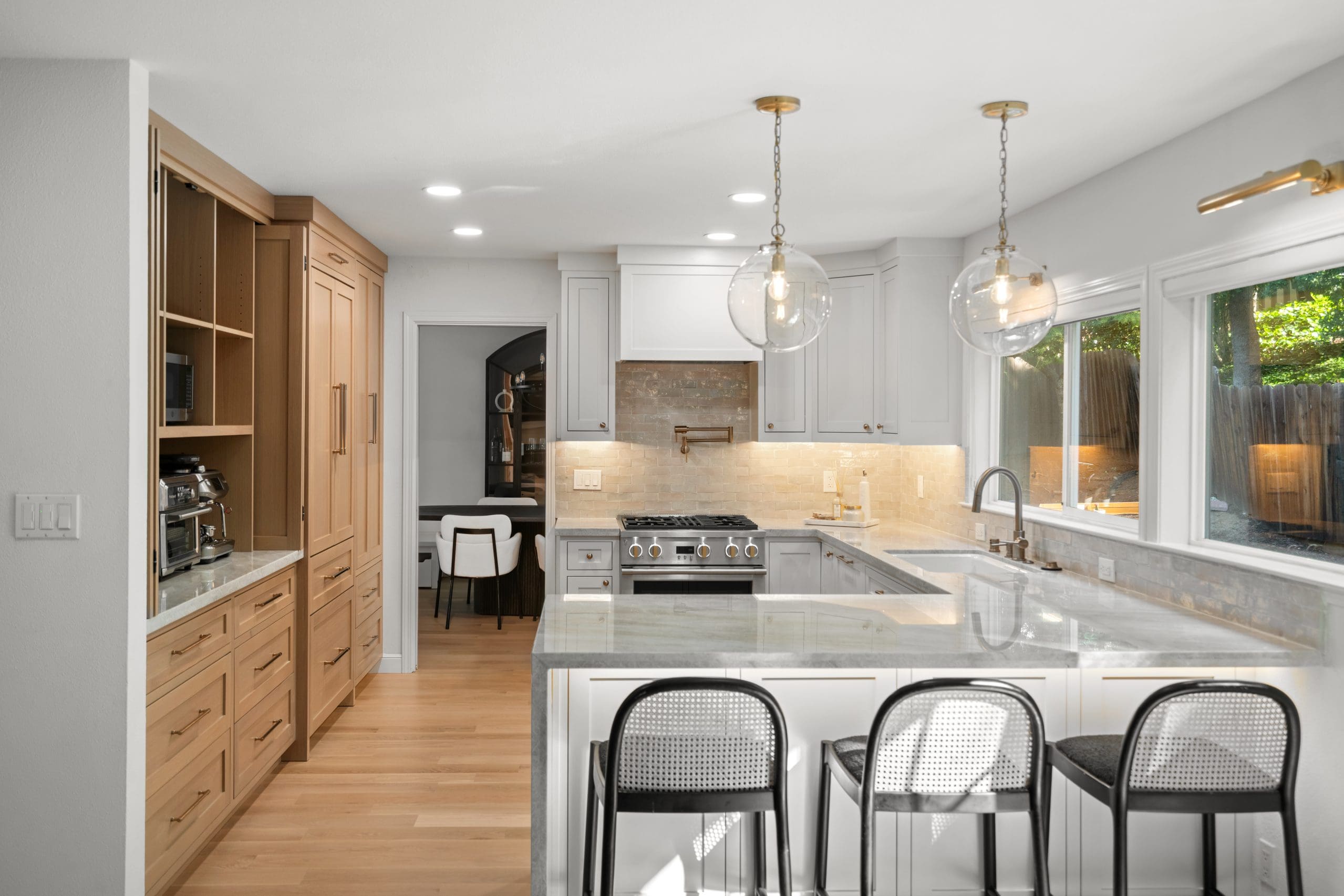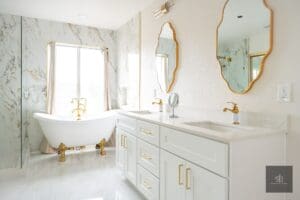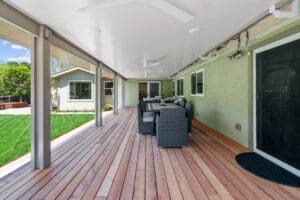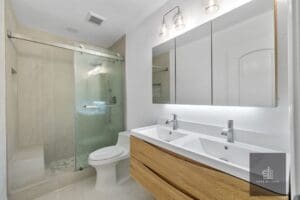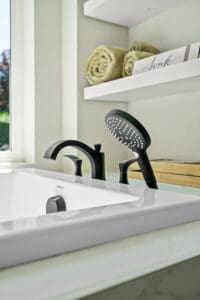Let’s Talk Texture, Shall We?
Alright, let’s get real for a second. We’ve all walked into a living room that looked like it was pulled straight from a showroom. It’s beautiful, sure, but it feels a bit… sterile. A little too perfect. Like you’re afraid to put your feet up on the coffee table. What’s the secret ingredient those picture-perfect spaces are often missing? It’s not some magical paint color or a wildly expensive sofa. It’s texture.
Mixing textures is the design superpower that takes a room from “flat and finished” to “dynamic and lived-in.” It’s the difference between a house and a home. Think about the coziest room you’ve ever been in. We’re betting it had a chunky knit throw, a warm wood side table, and maybe a sleek metal lamp all playing together. That’s the magic we’re talking about. And the best part? You don’t need a massive budget or a degree in interior design to master it. You just need a plan and a willingness to get a little tactile.
We see this all the time in our custom remodels here in the Bay Area. A client invests in a beautiful home renovation, but the space still feels cold. The moment we introduce a textured wall treatment or a mix of materials, the entire room just wakes up. It’s the final layer that makes all the difference. So, let’s roll up our sleeves and dive into the art of making your living room feel as good as it looks.
What Do We Even Mean By “Texture”?
Before we start throwing sheepskins and rattan around willy-nilly, let’s get on the same page. In design, texture is all about the perceived surface quality of an object. It’s how you think something will feel if you touch it.
We break it down into two main categories:
- Visual Texture: This is the illusion of texture. A smooth, glossy wall has a visual texture. So does a wallpaper with a printed-on grasscloth pattern or a painting with thick, impasto brushstrokes. Your eyes see depth and variation, even if the surface is physically smooth.
- Actual Texture: This is the real deal—the physical, touchable surface. Think nubby linen, rough-hewn wood, cool polished stone, plush velvet, or scratchy jute. This is where the real sensory magic happens.
The goal of a well-designed room is to create a rich tapestry that combines both. Why? Because our brains are wired to love variety. A monotexture room is, frankly, boring. A room with a diverse mix of textures is engaging, comfortable, and visually stimulating. It tells a story.
Your Go-To Playbook for Texture Pairing
Okay, theory is great and all, but how do we actually do this without our living room looking like a flea market exploded? It’s all about balance and contrast. Let’s break down some of our favorite materials and how to pair them.
The Heavy Hitters: Wood, Stone & Metal
These are your foundational textures. They often come in with your bigger furniture pieces, flooring, or architectural elements.
- Wood: The warm, organic soul of the room. You can have smooth, polished oak floors (visual texture) and a rustic, reclaimed wood coffee table with visible grain and knots (actual texture). The contrast between the two is chef’s kiss. We love using wood accents in our projects, whether it’s for a whole house remodeling or just a bathroom remodeling refresh to add that essential warmth.
- Stone: Stone, like marble or slate, brings a cool, timeless elegance. A stone fireplace surround is a fantastic textural anchor. Pair its smooth, cool surface with the rough weave of a large sisal rug. The contrast between the luxurious stone and the earthy, natural fiber is a classic move.
- Metal: This is your shot of sleek modernity. Think of the legs on your sofa, a floor lamp, or picture frames. Brushed nickel, matte black, or aged brass all have distinct textural personalities. A shiny metal lamp base against a matte fabric lampshade? That’s textural contrast in action.
The Soft Touches: Textiles Are Your Best Friend
This is where you can have the most fun and make the biggest impact with the least amount of cost. Textiles are the cozy, comfortable layer that makes a room inviting.
- Throw Pillows & Blankets: This is Textures 101. Don’t buy a matching set. IMO, that’s a design cardinal sin. Mix a chunky knit pillow with a smooth velvet one. Add one in raw silk and another in linen. Drape a faux fur or cable-knit throw over the arm of your sofa. Instant cozy.
- Rugs: A rug is a huge canvas for texture. A plush, shaggy rug feels incredibly different underfoot than a flat-woven kilim or a natural seagrass rug. It sets the tone for the entire seating area.
- Window Treatments: Don’t forget your windows! Flowy sheer curtains add a soft, breezy visual texture, while heavy linen or velvet drapes add weight and substance.
The Accent Aces: Wall Treatments & Decor
These are the finishing touches that add depth and personality to your vertical spaces and shelves.
- Wall Treatments: If you’re feeling adventurous during your home remodeling journey, consider a textural wall. Shiplap, board and batten, or even a grasscloth wallpaper can transform a flat wall into a dynamic backdrop. We recently incorporated a stunning shiplap accent wall in a Walnut Creek home addition, and it completely defined the space.
- Decor Items: This is your small-scale texture playground. A rough, terracotta pot for a plant. A smooth, glossy ceramic vase. A stack of books with paper and linen covers. A woven basket for storing remotes. Every little piece contributes to the overall textural story.
Creating a Cohesive Look (Without Losing Your Mind)
We know, it sounds like a lot. But how do you pull it all together so it looks curated, not chaotic? The secret weapon is a cohesive color palette.
Choose a primary color and two or three complementary colors, and then let texture provide all the visual interest. For example, if your palette is navy, cream, and tan, you can introduce:
- A navy velvet sofa (smooth and plush)
- Cream linen curtains (soft and slightly nubby)
- A tan leather armchair (smooth but worn-in)
- A jute rug in a natural tone (rough and earthy)
- Throw pillows in various navy and cream patterns and fabrics
See? The color story is simple and harmonious, but the textures are doing all the heavy lifting to keep it exciting. This is a principle we use in all our projects, from kitchen remodeling to basement remodel designs. It’s a foolproof formula.
Let’s Get Practical: A Texture Mixing Cheat Sheet
Here’s a handy table to visualize how some common materials play together. Think of it as a mixing chart for your living room cocktail.
| Your Foundation Piece | Contrasting Textures to Pair | Why This Combo Works |
|---|---|---|
| Sleek Leather Sofa | Chunky knit throw, nubby linen pillows, a rough wood coffee table, a sisal rug. | The cool, smooth leather is perfectly balanced by warm, cozy, and rough textures. It keeps the sofa from feeling too “corporate office.” |
| Plush, Upholstered Sectional | Smooth metal side tables, glossy ceramic lamps, a sleek leather pouf, a glass-top coffee table. | All that softness needs some hard, smooth surfaces to ground it. Otherwise, the room can start to feel a bit like a fluffy cloud (and not in a good way). |
| Smooth, Modern Drywall | A woven macramé wall hanging, a gallery wall with mixed materials (wood, metal frames), a bookshelf with a variety of objects. | The flat wall needs visual breaks. These elements add the layers of visual and actual texture that make the room feel decorated and personal. |
| Polished Concrete Floors | A thick, shaggy wool rug, a deeply grained wood dining table, lots of lush green plants. | Concrete is cool and industrial. The rug, wood, and organic plant life inject warmth, softness, and life to create a stunning balance. |
Don’t Forget the Fifth Element: Lighting
Ever wondered why a room can look amazing during the day but fall flat at night? It’s often the lighting. Light plays a huge role in how we perceive texture.
A harsh, overhead light flattens everything. It washes out all the beautiful shadows and highlights that define texture. Instead, use layers of light:
- Ambient Light: This is your general, soft light. Think dimmable ceiling lights.
- Task Light: A focused light for reading, like a floor lamp with a fabric shade that casts a soft, textured glow.
- Accent Light: This is your texture hero. A picture light grazing a stone wall, a small lamp shining across a wood grain, or candlelight flickering against a metallic vase. These directional light sources create shadows that make textures pop and add incredible depth to the room.
Making It Yours: The Personal Touch
At the end of the day, rules are made to be broken. The most important texture in your home is you. Your space should tell your story. Maybe that’s a collection of smooth sea glass from trips to the coast, or a rough, hand-woven blanket you picked up on vacation.
Don’t be afraid to mix that heirloom wooden trunk with your modern sofa. That’s where the real character comes from. As a remodeling company that specializes in expert home improvement, our favorite projects are the ones where the client’s personality shines through in the final details. We can build you the most beautiful custom remodel in Danville, but it’s your personal treasures that will truly make it a home.
Your Texture Questions, Answered (FAQ)
We hear a lot of the same great questions from clients in Oakland, Walnut Creek, and across the Bay Area. Let’s tackle a few.
1. Can I have too many textures in one room?
Technically, yes, but it’s harder than you think. The bigger risk is not having enough. The unifying power of a good color palette gives you a lot of freedom. If a room starts to feel chaotic, it’s usually a color issue, not a texture one. Scale matters, too—a few large textural elements (a big rug, a major piece of furniture) will feel more cohesive than a dozen tiny, competing ones.
2. How do I add texture if I’m renting or on a tight budget?
This is where textiles and decor are your secret weapons! You can completely transform a space with:
- A layered rug (drape a small sheepskin over a larger jute rug).
- An assortment of throw pillows and blankets in different fabrics.
- Woven baskets for storage.
- A statement floor lamp with an interesting shade.
- Removable, peel-and-stick grasscloth wallpaper on a single accent wall.
You don’t need a general contractor to make a huge textural impact.
3. My living room is open to my kitchen. How do I handle texture there?
Great question! This is super common in modern home remodeling layouts. The key is to create a sense of flow. Carry one or two key textures from the living room into the kitchen remodeling zone. For example, if you have a wood coffee table in the living room, choose wood barstools for the kitchen island. If you have black metal lamp bases, opt for similar hardware on your kitchen cabinets. This creates a visual dialogue between the spaces so the texture mixing feels intentional throughout the entire open area.
Ready to Transform Your Space?
Mixing textures isn’t just a design trend; it’s a fundamental principle for creating a space that feels authentic, comfortable, and uniquely yours. It’s about engaging all the senses and building a room with depth and character.
We’ve seen firsthand how powerful this approach can be. Whether we’re working on luxury home renovations or a more modest bathroom renovation, the principle remains the same: layers create life.
If reading this has sparked some ideas but you’re feeling a bit overwhelmed about how to execute it in your own home, that’s where we come in. At EA Home Builders, we live for this stuff. We can help you navigate the choices, manage the price and cost factors, and bring a cohesive, textured vision to life. We’re your nearest local expert home improvement team, and our reviews speak to our passion for creating beautiful, functional spaces for our neighbors.
So, what are you waiting for? Start by feeling the fabrics in your living room. Look at the surfaces. Identify what you have and what might be missing. And if you want a partner to help you nail the perfect mix, you know who to call. Let’s build something beautiful together.

